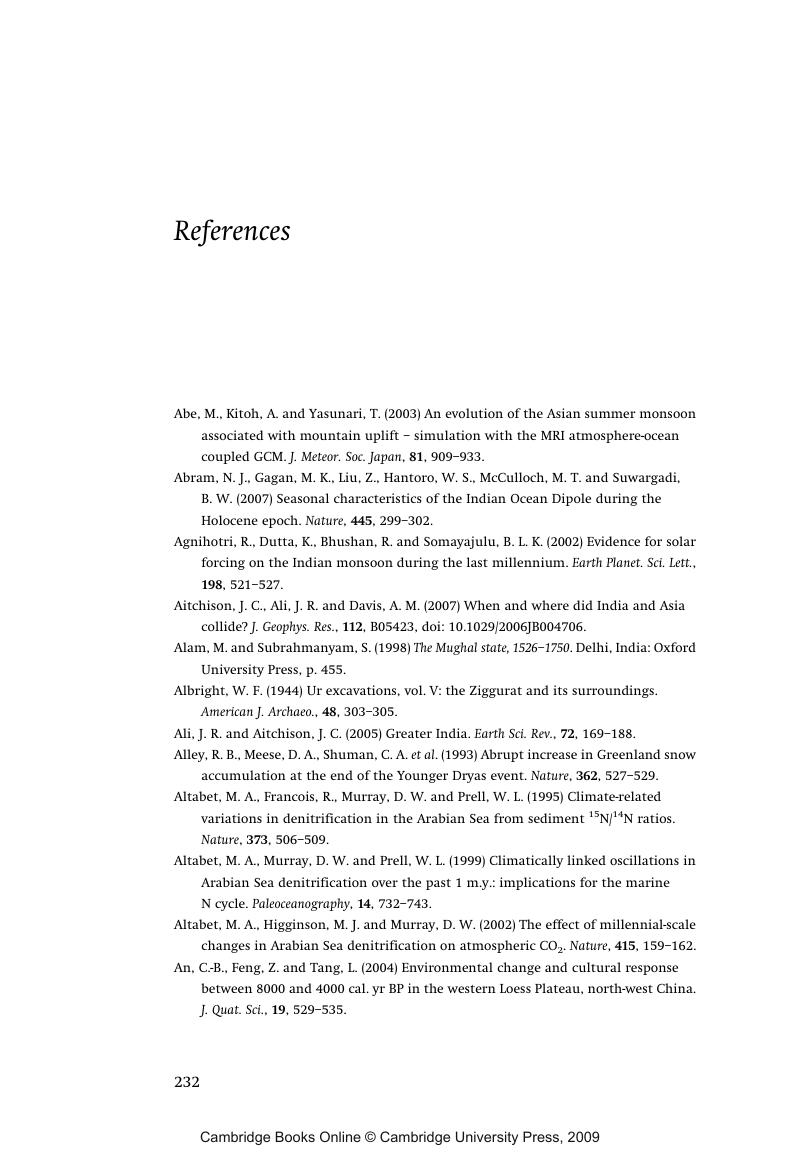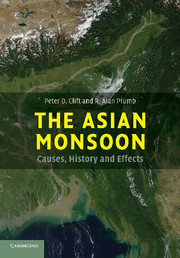Book contents
- Frontmatter
- Contents
- Preface
- Acknowledgements
- 1 The meteorology of monsoons
- 2 Controls on the Asian monsoon over tectonic timescales
- 3 Monsoon evolution on tectonic timescales
- 4 Monsoon evolution on orbital timescales
- 5 Erosional impact of the Asian monsoon
- 6 The Late Holocene monsoon and human society
- References
- Further reading
- Index
- Plate section
- References
References
Published online by Cambridge University Press: 01 September 2009
- Frontmatter
- Contents
- Preface
- Acknowledgements
- 1 The meteorology of monsoons
- 2 Controls on the Asian monsoon over tectonic timescales
- 3 Monsoon evolution on tectonic timescales
- 4 Monsoon evolution on orbital timescales
- 5 Erosional impact of the Asian monsoon
- 6 The Late Holocene monsoon and human society
- References
- Further reading
- Index
- Plate section
- References
Summary

- Type
- Chapter
- Information
- The Asian MonsoonCauses, History and Effects, pp. 232 - 262Publisher: Cambridge University PressPrint publication year: 2008

